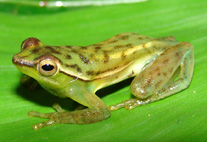Abstract
Sequences from the mitochondrial control region of 14 putative species of Acrossocheilus (Cyprinidae) were examined to elucidate phylogenetic relationships within species of the barred group in that genus. Phylogenetic reconstructions were generated using three tree-building methods: maximum parsimony, maximum likelihood, and Bayesian inference. The resultant phylogenies were consistent with monophyly of the majority of the morphologically recognized species. However, mitochondrial DNA sequence evidence is incongruent with monophyly of A. fasciatus, as currently conceived. This species occurs only in the upper Qiantang-Jiang basin in Zhejiang and Anhui provinces, and coastal rivers in the Zhejiang Province. The species formerly recognized as A. paradoxus from Zhejiang Province is A. fasciatus. The specimens previously reported as A. fasciatus from river basins in Fujian Province are misidentified A. wuyiensis. The barred group of Acrossocheilus is shown to be polyphyletic. Acrossocheilus is restricted to the barred species here placed in "Clade II," containing A. paradoxus and relatives. Separate generic status is recommended for A. monticola and for A. longipinnis and their closest relatives, although more information on phylogenetic relationships based on multiple genes is required to develop robust phylogenetic hypotheses and diagnoses. Masticbarbus Tang, 1942 is available for A. longipinnis and three allied species (A. iridescens, A. microstomus and A. lamus).

